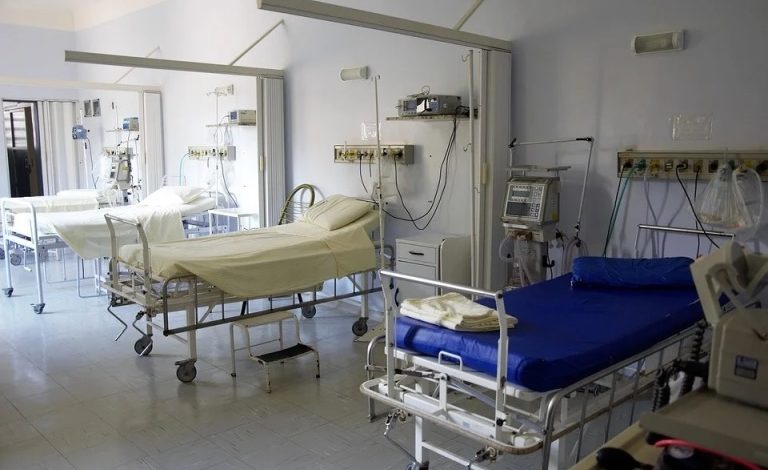Healthcare Leader: Dr Biren Chauhan
Group COO, Sunshine Global Hospitals

We all can debate and discuss at length if we start evaluating the pros and cons which the lockdown won across sectors in the country. But we all agree to the fact that hospitals operate and reflect the healthcare needs of the community/ city/ state that they operate from and hence cannot escape the impact of micro or macro-level policy decisions in response to COVID-19 Pandemic. The lockdown had a varied impact from mid-March till date and will have for the near term future too.During the initial phase of the lockdown, all private hospitals had the only emergency and critical care patients flow as the fear of COVID-19 and complexity of COVID care restricted both patients and the providers to get themselves ready for the new normal.
As cases kept on rising amidst the lockdown, the mid-phase of the lockdown saw hospitals offering COVID-19 care to the patients by the caseload in and around the hospitals. Many hospitals converted themselves into designated covid care hospitals and others into non-covid or mix care models with physical segregation between covid and non-covid patients.The mid-phase threw a range of challenges from manpower to resource management to care protocol and limited treatment protocols, etc. All stakeholders like the federal government, state and district administration, public and private partnerships flourished in this challenging time of COVID-19 Pandemic. Gradually the new normal was achieved by the private hospitals and they consolidated and refined their covid care delivery model in no time and went back to routine work in less than three to four months.
Capacity enhancement as per the local need was done at all levels where patients, providers and payers were working very closely to fight the pandemic in the latter and end phase of the lockdown. It is reasonable to say that the principle of ‘survival of the fittest’ was tried, tested and proven true once again amidst the pandemic. Foundations of humanity and its value system was yet again at its best peak and the fighting spirit of the human race was once again at its full display.The learnings from pandemic will have long-lasting ramifications and we will see a set of new rules emerging to better manage Hospitals. Futuristic planning will have the inherent component of being flexible to accommodate unforeseen changes unfolding outside the healthcare domain.
Hospitals that got away early from financial and non-financial stress on their functioning were also the ones that were first to mould themselves as per the need of the new normal. Being cost-effective is the most important catalyst for turning around any situation to an advantage. Developing and nurturing spectrum of the multi-faceted and diverse manpower resource pool, enabling outlook-oriented systems capable enough to adapt to new challenges and value and ethos driven organisations are more immune to the threat of COVID-19 on its functioning.COVID-19 care offering at an affordable cost has been possible only for those hospitals who are good enough to keep themselves cost-effective by adopting innovative cost optimisation models.
Cost-effective solutions without compromising on quality have been the trademark of sustainable hospitals amidst the pandemic. Also, successful hospitals in COVID-19 showed that leadership capabilities and performance-oriented culture of hospitals stand out as a differentiator and determinant of the success of the hospitals in these challenging times of the pandemic.The pandemic has changed monthly, quarterly and annual projections for hospital leaders. First and foremost, leaders must rework and redraw projections and bring them closure to reality after considering the pandemic.
Strong understanding of the virus, its multi-pronged interaction with micro and macro environments at global, national, state and community level will surely be an added advantage. Once it is done, the next logical step would be to assess the bottom-line expenses of all types (direct and indirect, fixed, variable and semi-variable, etc).Leaders must prioritise the areas where they can optimise as per the need of the hour, for example, considering innovative ways to address fix cost/ minimum guarantee committed to specialist doctors and engaging them in an empathetic way.
Once they understand the real picture of the pandemic and its impact on the financial health of the institute, to help organisations become viable in coming months, doctors will stand together with the institute and willingly take proportional hits in their payouts and help the institute in difficult times. This can be done without any friction only when a participative culture exists in hospitals. Rather than having quick hire and fire, hospitals must protect and support its workforce during the pandemic and beyond. It will surely shape up the hospital’s workforce as its strength.Similarly removing avoidable wastages and optimising cost will give a competitive edge to hospitals. Working with vendors, partners and associates in pharmacy, general purchase, BME, engineering and maintenance, outsourced services, etc will give needed leverage by having cost optimisation of around 7-10 per cent over the next year or two in this segment.
All these would be possible when hospitals have an inherent culture of sharing and caring and positive attitude towards its doctors, human resource, vendors and associates. It can not happen overnight and I firmly believe empathetic, participative and supportive leadership will be critical to the success of cost optimisation efforts during COVID-19 and post-COVID scenario.FY 2020-21 will be marked as an outlier financial year for almost all hospitals irrespective of whom they cater to (COVID or non COVID or both). On a brighter side, hospitals will be more flexible and will not shy away from quickly changing their service offering as per the needs of the community around. Also, hospitals will be quick to take radical decisions to ensure their viability.Hospitals will be likely to keep their legal and statutory compliance in check. Communication with different stakeholders within and outside the hospitals will be the cornerstone.
A lot of hospital leaders are now closely working with local government administrations and this will be good for the communities around. Information sharing between hospitals in the same region is also a good sign and will help everyone to improve their performance. Trust and respect of the community towards their healthcare providers have increased tremendously because of COVID-19.Deploying technological solutions and reaching to patients by innovative solutions will unlock the future potential of healthcare success. Communities around have become vigilant towards its health and well being and will improve population health on a longer run. Overall, healthcare in India will be a lot different in terms of patients, providers and payers in the coming years and uptake of services will be more than ever.
Hopefully, disease patterns will also change from communicable to non-communicable and infectious diseases and healthcare-seeking behaviour will change for the larger good. Governments will no longer be able to ignore the basics of healthcare and they will have to deliver to ensure that social determinants of healthcare and gaps are addressed in a time-bound manner. The local administration has seen a devastating impact of COVID-19 in the lives and livelihood of one and all. They will also give healthcare much-needed attention and priority by strengthening primary and secondary care delivery systems at grassroots levels. Overall, the outlook for FY 21-22 is very promising and we’ll witness a more transparent, more coordinated healthcare delivery system with the government’s role that will take a paradigm shift from being a regulator to the facilitator. The public health and healthcare delivery system will be closer to each other than ever and we hopefully will see a holistic care delivery model across the country in coming years.




